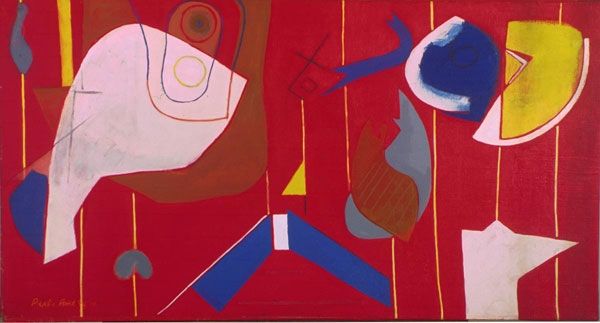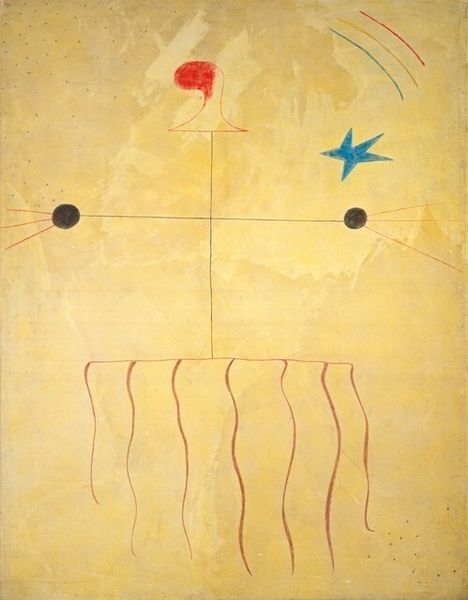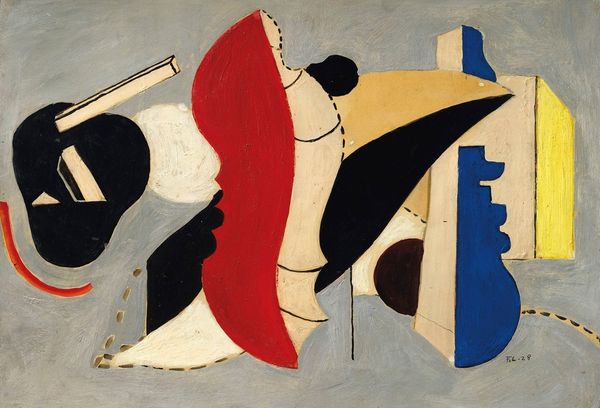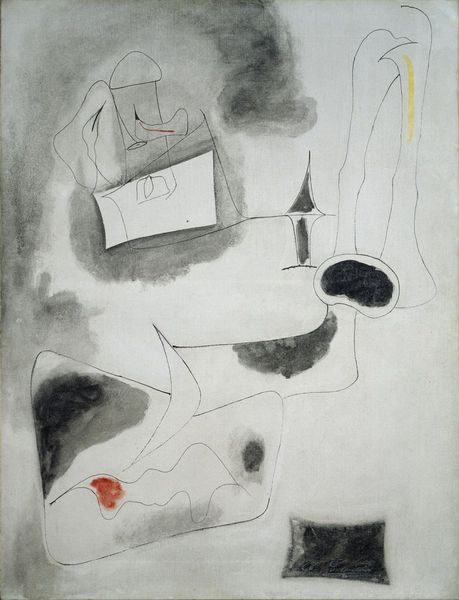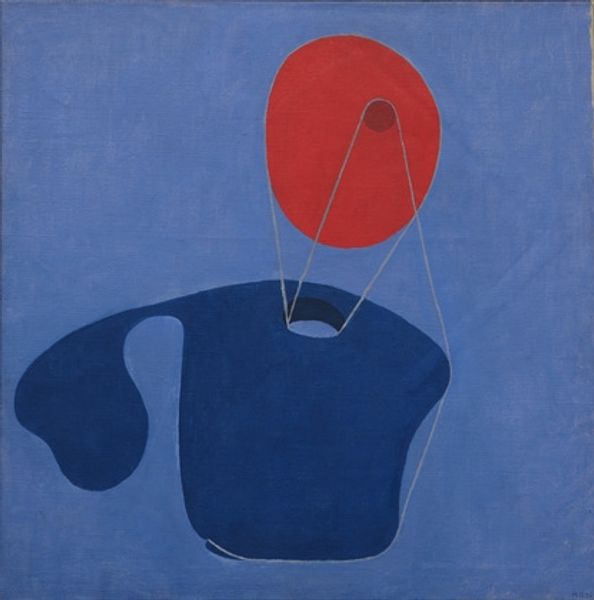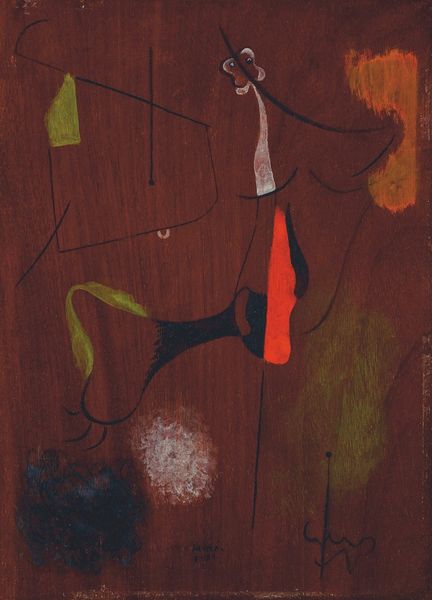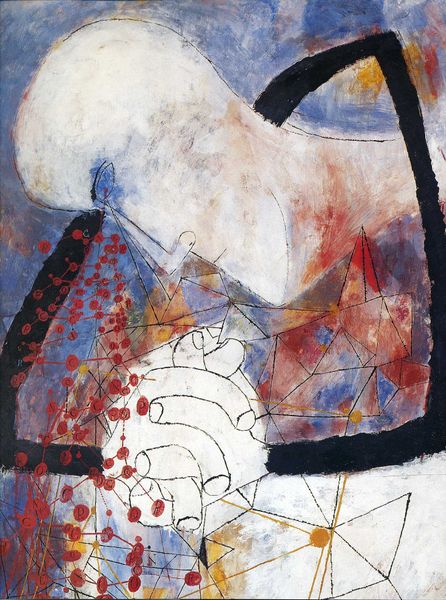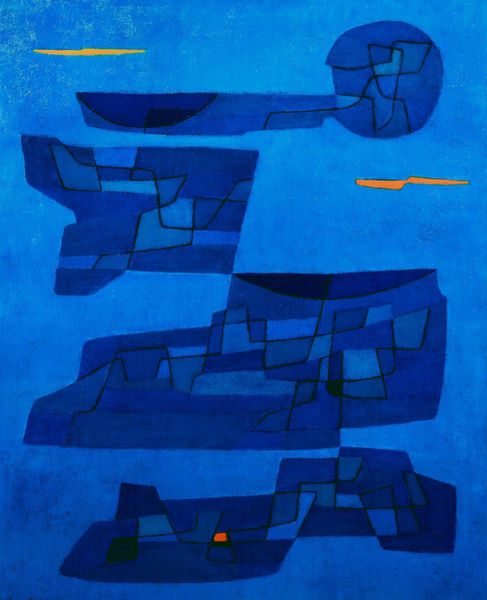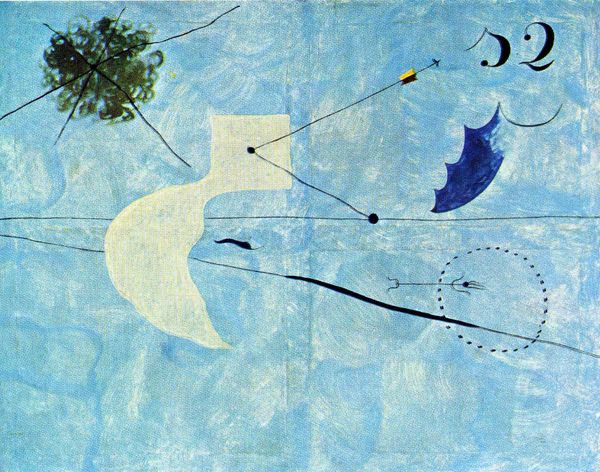
Copyright: Joan Miro,Fair Use
Editor: This is Joan Miró's "Painting" from 1927, oil on canvas. The ultramarine is so striking, and the scattered shapes and lines feel both playful and unsettling. What do you see in this piece, beyond the aesthetic appeal? Curator: For me, Miró’s work, especially from this period, serves as a critical reaction to the oppressive socio-political climate of the time, especially leading up to the Spanish Civil War. The seeming simplicity of these forms belies a deeper engagement with the anxieties and desires circulating in avant-garde circles. What do you make of the recurring organic forms, juxtaposed with hard geometric shapes? Editor: I hadn’t considered the political context so directly. I tend to see them more as symbols of dreams or subconscious thoughts, in keeping with Surrealist ideas. The shapes remind me of cellular structures seen through a microscope. Curator: Precisely, but dreams are never apolitical, are they? Think about the way Surrealism became a haven for artists fleeing authoritarian regimes. The escape into abstraction wasn't merely aesthetic, it was often a subversive act. Could these "cellular structures," as you call them, represent a fragmented sense of self or community under duress? How can this interpretation make us think more about our identity, or the search for it, today? Editor: That really reframes the work for me. I hadn't fully connected the personal, dreamlike imagery with broader societal tensions. It encourages us to really challenge the idea of a painting only existing on an aesthetic level. Curator: Exactly. It urges us to consider art as a mirror reflecting not just individual fantasies, but collective struggles and aspirations, throughout art history and the modern day. Editor: Thank you for illuminating this layered perspective. I’ll never look at Miró in quite the same way again.
Comments
No comments
Be the first to comment and join the conversation on the ultimate creative platform.
